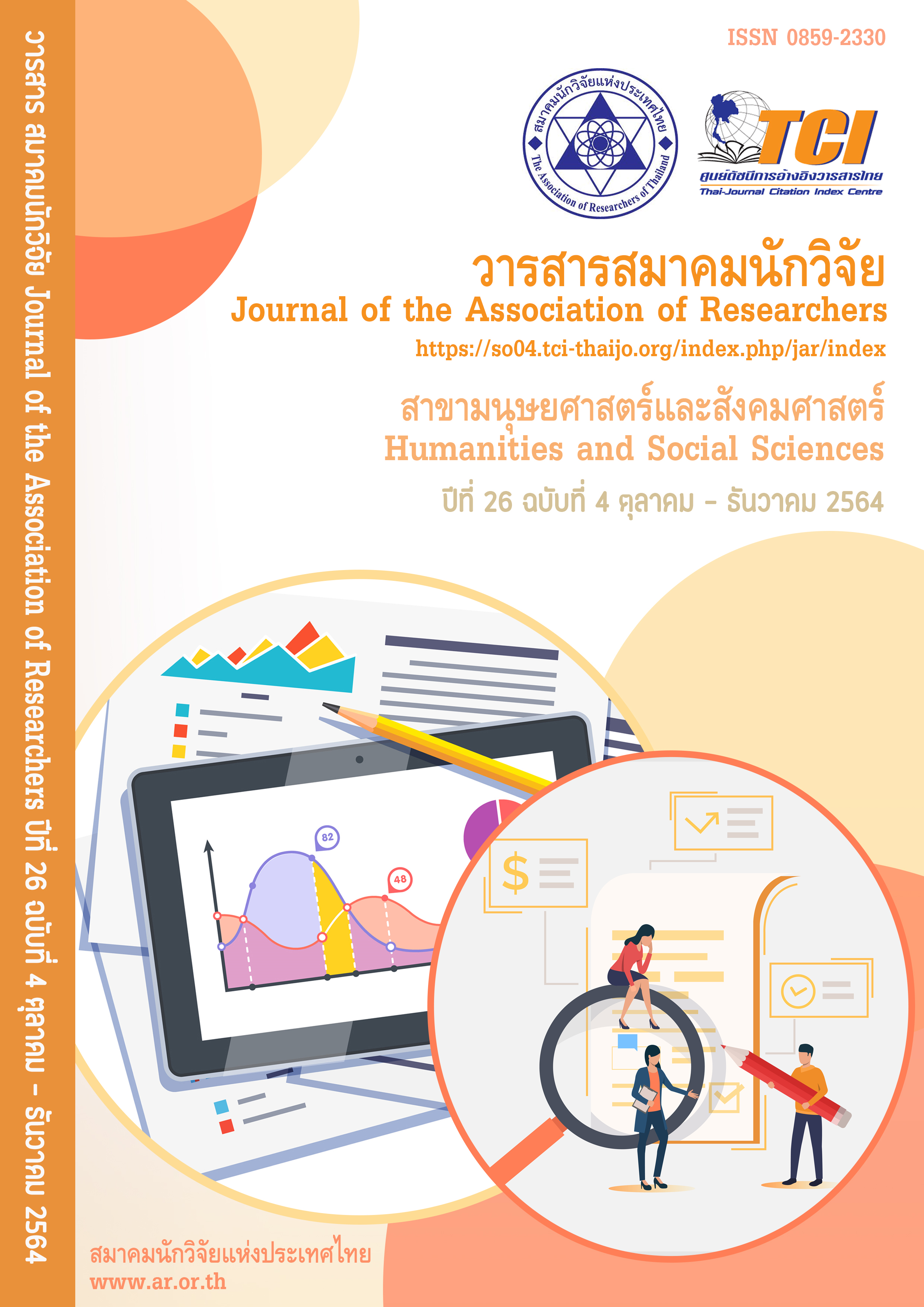Potential analysis for spatial decision making in agriculture and biotechnology industry to enhance industry competitiveness: A case study of biotech-products
Main Article Content
Abstract
The purpose of this study was to conduct the Potential Analysis for Spatial Decision Making in the Agriculture and Biotechnology Industry to Enhance Industry Competitiveness of Biotech-Products. It was a Mixed Methods approach: Qualitative and Quantitative Research Design. The data was collected by submitting a courtesy request for information to relevant agencies, The data was analyzed by Descriptive Statistics and Spatial Data using the development of the spatial model by determining weights and Hierarchies in the form of Simple Additive Weighting (SAW) and Analytic Hierarchy Process (AHP) considering various factors groups and specifications through the process of determining Weighted Average and Data Interpretation. The findings represented that the level of appropriateness in the development of the potential surface of various provinces studied in each area differed according to the analysis factors, lands, labors, capitals, and entrepreneurs. It was obviously seen that 1) The EEC area was the most potential area to develop the Biotechnology industries in terms of Biotech Product, Agri-Tech and Rubber Products. Mueang Chon Buri District, Si Racha District, and Bang Lamung District of Chonburi province were outstanding and suitable for industrial development. 2) Lower Northern Thailand may not have an outstanding potential level but have a significant identity, including the variables in the number of factories, suitable physical evidence. In addition, it contained Agri-Tech industries that were more prominent than other areas. Mueang Nakhon Sawan District, Nakhon Sawan Province was a great potential area especially the Agri-Tech industry. 3) Regarding Lower Northeastern Thailand, it was found that Khon Kaen Province was the most potential area in the Agri-Tech industry and had a high level of potential in the Biotech-Product industry. In this regard, the above research results can be further extended the analysis through external factors or other basic information in order to explain and obtain a different perspective on the research results of the study and cover the suitability factors for the establishment of industrial factories occurring in the future.
Article Details
บทความที่ปรากฏในวารสารนี้ เป็นความรับผิดชอบของผู้เขียน ซึ่งสมาคมนักวิจัยไม่จำเป็นต้องเห็นด้วยเสมอไป การนำเสนอผลงานวิจัยและบทความในวารสารนี้ไปเผยแพร่สามารถกระทำได้ โดยระบุแหล่งอ้างอิงจาก "วารสารสมาคมนักวิจัย"
References
ประชาคมเศรษฐกิจอาเซียน. ขอนแก่น. มหาวิทยาลัยขอนแก่น. สืบค้นจากhttps://cscd.kku.ac.th/uploads /proceeding/070714_142334.pdf
เบญจทิพย์ หนูเผือก. (2560). ศักยภาพในการแข่งขันอุตสาหกรรมปาร์มน้ำมันไทยในตลาดโลก(วิทยานิพนธ์
ปริญญามหาบัณฑิต). ปทุมธานี. มหาวิทยาลัยเทคโนโลยีราชมงคลธัญบุรี. สืบค้นจากhttp://www.repository.rmutt.ac.th/xmlui/bitstream/handle/123456789/3243/RMUTT158656.pdf?sequence=1
Chulalongkorn University Intellectual Property Institute (2017). The Report of Trending technology analysis and industry, agricultural industry and biotechnology [Online].From.https://www.ipthailand.go.th/images/3534/web_01052018/Report_CHU/3_Agriculture_and_Biotechnology_8.12.60_CHU.pdf.
Eastern Economic Corridor Office of Thailand. (2017). The Meaning of agricultural industry and Biotechnology. [Online]. From https://www.eeco.or.th/industry/ Agriculture and Biotechnology .
Keawmanee, Reawwadee. (2012). Industrial Location Theory. [Online]. From http://www.oie.go.th/sites/default files/attachments / /article/Relocation_Myanmar.pdf.
Malczewski, J. (1999). GIS and Multicriteria Decision Analysis. New York: John Wiley & Sons National Science Technology and Innovation Policy Office. (2012). framework Policy of
Thailand biotechnology development 2012-2021. (พ.ศ.2555-2564). [Online]. From http://www.sti.or.th/uploads/content_file/Biotech%20Policy%20Framework_TH.pdf.
Takeda, Y., Kajikawa, Y., Sakata, I., & Matsushima, K. (2008). An analysis of geographical agglomeration and modularized industrial networks in a regional cluster: A case study at Yamagata prefecture in Japan.Technovation, 28(8): 531-539. [Online]. From https://doi.org/10.1016/j.technovation.2007.12.006.
The Office of Industrial Economics (2018). The Measures for the development of Thai biological industry (2018 – 2027). [Online]. From http://www.oie.go.th/sites/default/files/attachments/news_oiepr/news-oiepr-10-2561.pdf.
Saaty, T. J. (1996). Decision making in Complex Environments, The Analytical Hierarchy Process for decision making with Dependence and Dependence and Feedback. Pittsburgh: RWS Publications.
Reference translated in Thai
Jintana Somsawas, Siriwan Chiangneum. (2014). An Analysis of The Potential Of The Automotive Industry in Thailand Under the Asean Economic Community. Khon Kaen University. [Online]. From https://cscd.kku.ac.th/uploads /proceeding/070714_142334.pdf
Benjathip Noophuak. (2017). Competitive Potential of Thai Oil Palm Industry in the Global Market Rajamangala University of Technology Thanyaburi. [Online]. From http://www.repository.rmutt.ac.th/xmlui/bitstream/handle/123456789/3243/RMUTT158656.pdf?sequence=1


